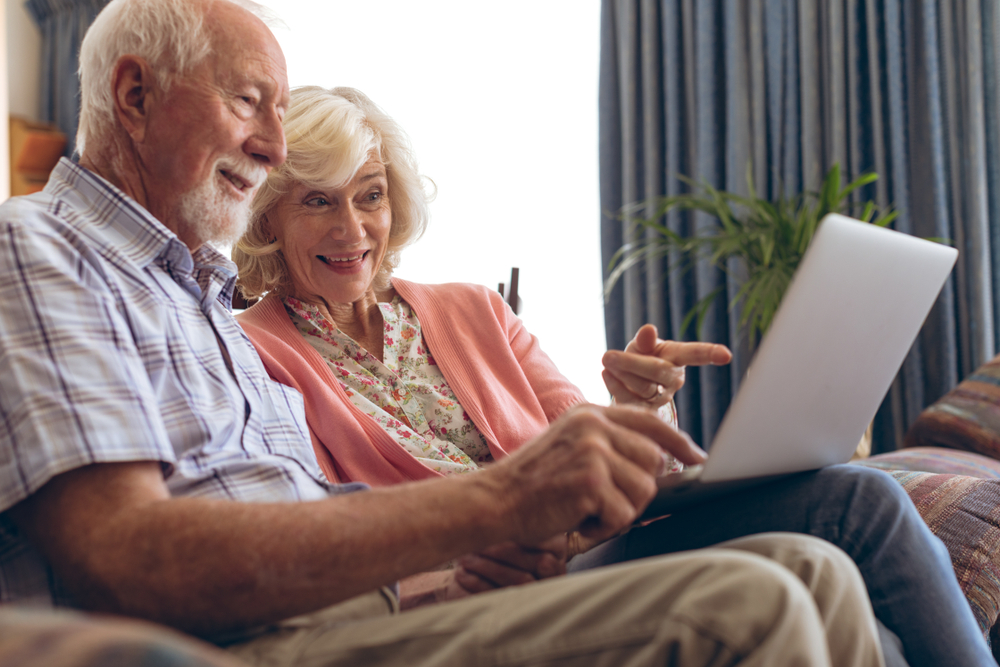The changes we’ve seen in health care due to COVID-19 — especially for seniors and their caregivers — have been immediate and profound. Telehealth platforms have seen significant increases in volume since March 6, when the Centers for Medicare & Medicaid Services (CMS) announced that Medicare would temporarily pay clinicians to provide telehealth services for beneficiaries nationwide.
Although telehealth services have been available to patients of all ages prior to COVID-19, the expansion for Medicare beneficiaries is significant. Before the March 6 announcement, Medicare would only pay clinicians for telehealth if the patient lived in a rural area and travel was required to access those telehealth services. Beneficiaries could not receive telehealth services at home.
In keeping with the Centers for Disease Control and Prevention’s (CDC) social distancing and “slow the spread” protocols, the following services may now be accessed virtually by Medicare beneficiaries — regardless of diagnosis (another important change facilitated by the recent expansion):
- Common office visits
- Mental health counseling
- Preventive health screenings
Essentially, if needs can be met remotely, providers can now utilize telehealth services, which keeps their most vulnerable Medicare beneficiaries — particularly those at greatest risk for COVID-19 — safe at home. And for beneficiaries who are not residing at home, telehealth services can be delivered in nursing homes and hospital outpatient departments as well.
This surge in telehealth services has put a strain on some health systems, particularly those whose telehealth apps or platforms for virtual visits were not being widely used by patients or clinicians before COVID-19. In fact, American Well (creator of the Amwell telehealth app) said usage has increased 158% nationwide and 650% in hard-hit Washington state.
A learning curve for patients, providers, caregivers & the world
As the use of telehealth services continues to increase, there has been a steep learning curve for the providers new to virtual visits, the caregivers now supporting a homebound senior remotely and the senior patient with limited technology experience who is now feeling significantly isolated.
The National Council for Behavioral Health recommends providers who are unfamiliar with the video conferencing application they are using to practice among colleagues first. When you are in a comfortable place with the technology, it is important to remember that the patient you are serving may not have had the opportunity to practice. Make sure to walk them through slowly, if needed. If all else fails, have a backup plan.
The impact of COVID-19 on telehealth has also changed the parameters of what constitutes virtual care coordination. As seniors find themselves in a more vulnerable position than ever, it is important to deploy non-clinical, home-based care services to safeguard this at-risk population.
Asking the right questions is paramount to a successful telehealth visit, but it’s more than just the typical lineup posed during some wellness checks especially due to COVID-19. It’s critical to get a solid understanding of how the patient is handling the pandemic and if there have been any changes to his or her condition or health since the last time you spoke.
Providers can also help connect seniors to the non-clinical services they need. This could include a list of food and comfort items such as toilet paper delivery services, safe ways to receive and fill any prescriptions the patient may have or local resources that may be able to provide financial aid or relief during COVID-19. These questions will help providers address any barriers to the continuity of care that will ensure patients get ‘the right care at the right time.’
As stay-at-home orders may continue for the foreseeable future, we may be experiencing these newly expanded telehealth services becoming more common within the care continuum. These questions are just the tip of the iceberg. Providing and connecting your patients with viable information including lists of food services, prescription delivery, mental or behavioral health resources and community outreach programs can help establish a valuable connection between patients and caregivers.
This connection will help to normalize the virtual interaction, especially during this time of seeming disconnect, over time. Once you have a connection, it’s just as important to continue providing high-touch support and access to resources for the patients to ensure the best outcome and to reduce unnecessary readmissions.
For patients, it’s important to prepare for your telehealth visits the same way you would treat an in-person visit. Document any new or concerning symptoms and ask questions, if needed. Your phone can be a great way to document specifics of your symptoms. Your provider will also be able to clarify any current restrictions or guidelines presented by the CDC or local public health officials. There’s plenty of information circulating, so if you have questions such as what time senior hours at the grocery store are, now is the time to ask them.
The sudden and significant impact and benefit of telehealth has been felt across the healthcare industry — and by asking and layering in clinical, with non-clinical services and resources, may help solidify the service as a more widely practiced benefit of the care continuum even after the COVID-19 crisis is over.
How can we better foster connections with at-risk seniors to have what they need to stay safe and healthy at home? Click below to watch this webinar featuring naviHealth infectious disease and healthcare experts Ken Botsford, MD and Shelli Lara.



